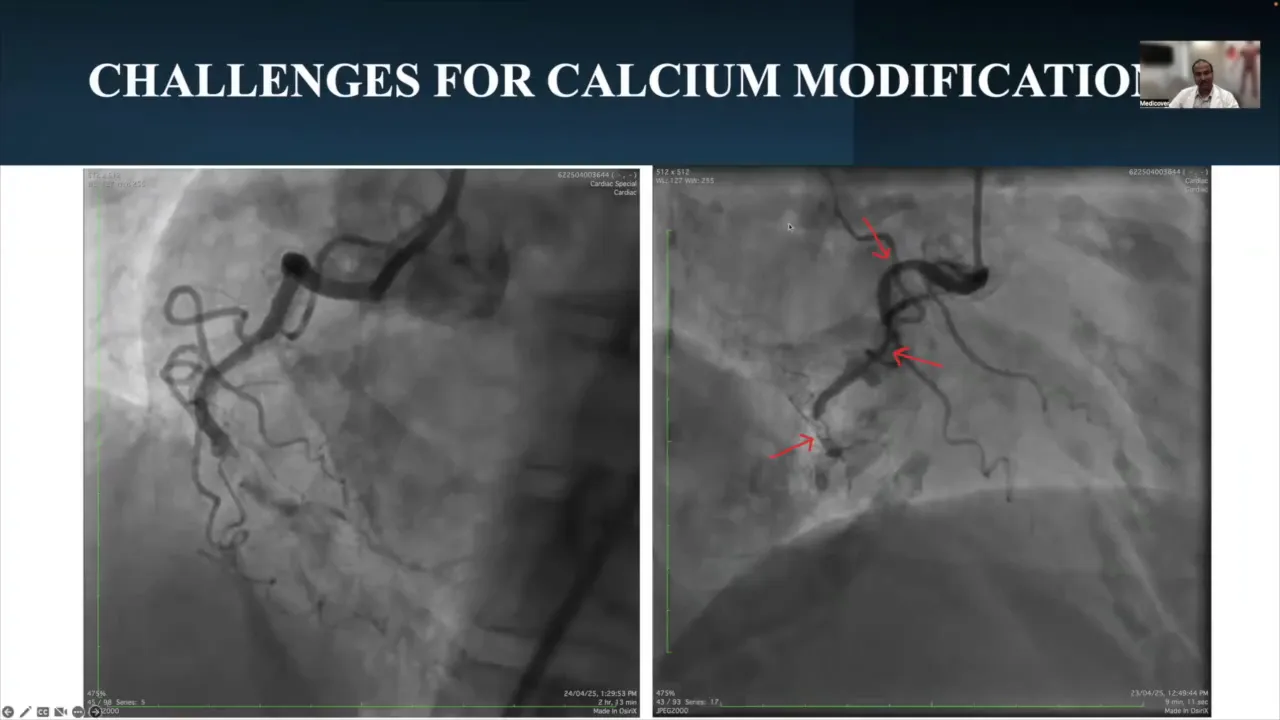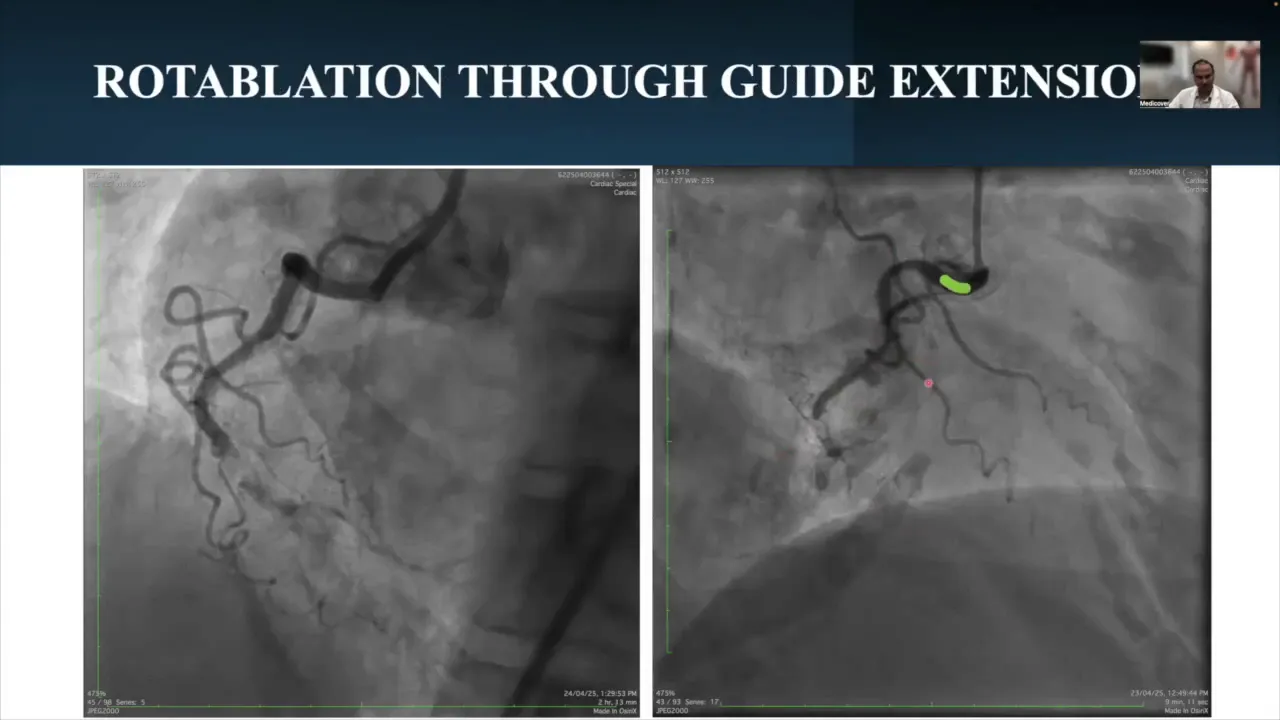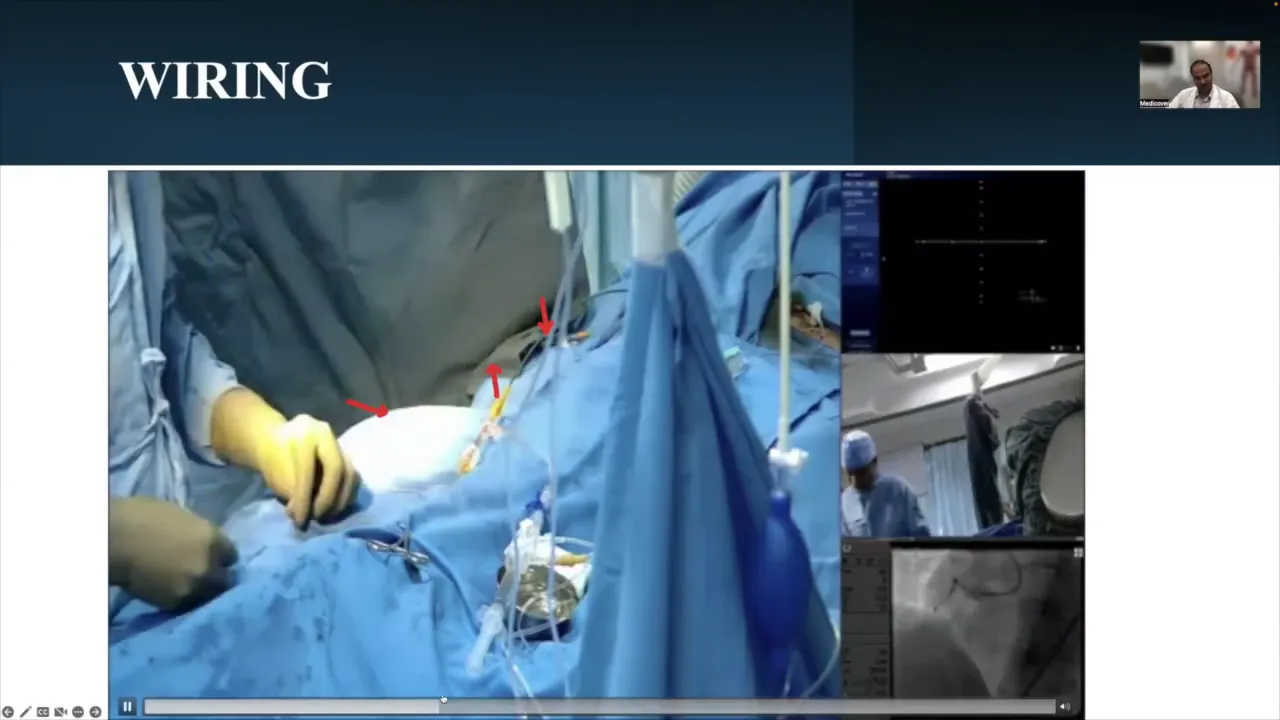19 May Rotablation Reimagined: Navigating Tortuous, Calcified Arteries with Guide Support
In this blog post, we’ll explore the intricate process of rotablation through guide extension, as explained by Dr. Sharath Reddy Annam in his engaging lecture. This technique is crucial for addressing complex percutaneous coronary interventions (PCI), especially in cases involving tortuous and calcified coronary arteries.
Table of Contents
- Understanding the Case: A Tortuous Calcified Right Coronary Artery
- Step-by-Step Approach to Complex PCI
- Conclusion
- Frequently Asked Questions (FAQ)
Understanding the Case: A Tortuous Calcified Right Coronary Artery
The patient in focus is a 78-year-old with a history of failed PCI, presenting with a nearly occluded right coronary artery (RCA). The artery is not only tortuous but also heavily calcified, making it a challenging case. These conditions necessitate a strategic approach to ensure successful intervention without complications.
Calcification in the arteries can lead to significant complications during PCI, such as perforations or incomplete lesion modification. In this case, the calcification is predominantly located in the distal RCA, requiring careful navigation and treatment.

The Role of Rotablation
Rotablation is a technique used to modify calcified plaques in the arteries. It involves using a tiny, rotating cutting device called a rotabur to safely drill through the calcified lesion, allowing for better stent placement. However, the process can be risky, especially in tortuous arteries.
In this case, the presence of three loops in the artery increases the risk of complications during rotablation. The furrowing effect of the rotabur can potentially lead to vessel perforation, particularly if the device traverses these loops carelessly.
Guide Extension: A Game Changer
To mitigate these risks, a guide extension catheter is employed. This tool helps centralize the rotabur, minimizing the centrifugal forces that can cause furrowing. By placing the guide extension beyond the first loop, the focus is on central burring, which significantly reduces the risk of perforation.
Starting with a small bur is paramount in such situations to prevent vessel perforation. The guide extension catheter provides the necessary support and control, ensuring the rotabur’s smooth passage through the vessel.

Step-by-Step Approach to Complex PCI
The approach to this complex PCI involves several critical steps:
1. Initial Setup and Wire Advancement
The procedure begins with selecting the appropriate guide and wire. An L guide with guide extension is used, and the wire is carefully maneuvered through the loops in the artery. This process requires immense support and precision.
In this case, a cyan blue wire was initially used but got stuck. The team then switched to a Filter XTR wire, which successfully crossed the lesion without causing vessel dissection.

2. Balloon Dilatation and Space Creation
Once the wire is in place, creating space for further intervention is crucial. A series of balloon dilatations are performed, starting with a 1 mm balloon. However, the balloon got stuck, necessitating a technique known as grenadoplasty, where the balloon is inflated until it ruptures.
Subsequent dilatations with larger balloons, such as a 1.5 mm balloon, are performed to further open the vessel and facilitate the passage of other devices.

3. Advancing the Corsair Catheter
After creating space, the Corsair catheter is advanced. This catheter is chosen for its ability to torque and provide additional support. Despite initial resistance, the catheter is successfully navigated through the lesion, thanks to precise manipulation and support from the guide extension.

4. Rotablation Procedure
With the Corsair catheter in place, the rotablation procedure begins. The smallest bur, a 1.25 mm, is used to carefully ablate the calcified lesion. The focus is on removing resistance points and ensuring a smooth passage for future devices.
During this process, the guide extension plays a critical role in stabilizing the rotabur and preventing unwanted movements that could lead to vessel damage.

5. Final Steps: Stenting and Post-Procedure Assessment
After rotablation, a 2.5 mm balloon is used for further dilatation. Intravascular imaging techniques, such as intravascular ultrasound (IVUS), are employed to assess the extent of calcium and guide further treatment.
In this case, intravascular lithotripsy (IVL) is performed to address residual calcification, followed by stenting with a 3.48 mm stent. The final angiographic images show a successful result, with the artery fully patent and no significant residual stenosis.

Conclusion
Rotablation through guide extension is a sophisticated technique that requires careful planning and execution. In cases involving tortuous and calcified arteries, this approach maximizes support and minimizes risks, ensuring a successful PCI outcome.
By understanding the nuances of guide extension and rotablation, interventional cardiologists can effectively tackle even the most challenging cases, improving patient outcomes significantly.
Frequently Asked Questions (FAQ)
What is rotablation?
Rotablation is a procedure used to modify calcified plaques in coronary arteries using a rotating device called a rotabur. It helps in preparing the vessel for stent placement.
Why is guide extension important in rotablation?
Guide extension centralizes the rotabur, reducing the risk of vessel perforation and ensuring a smoother operation in tortuous arteries.
What are the risks associated with rotablation?
Risks include vessel perforation, dissection, and complications from the furrowing effect of the rotabur in tortuous arteries.
How is intravascular lithotripsy used in PCI?
Intravascular lithotripsy uses sound waves to break up calcified plaques, allowing for better stent placement and vessel expansion.
For more insights on advanced interventional techniques, consider subscribing to Dr. Sharath Reddy Annam’s channel, Interventional Strategies, where you can find more educational content on complex PCI procedures.


No Comments